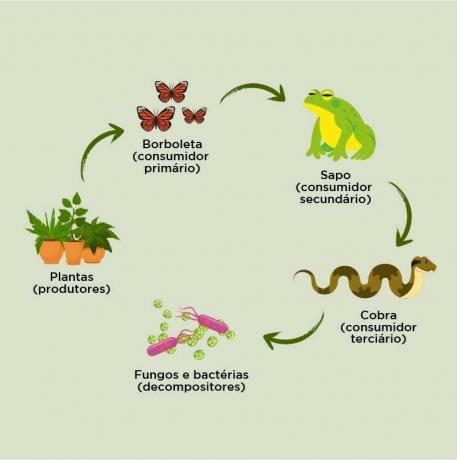
You trophic levels are directly related to living beings, yes, that's right, living beings need this process to stay alive and for that they need energy to perform their most necessary functions in their natural habitat, it is in this factor that trophic levels or relationships enter trophic
Index
Trophic levels is the position that a living being occupies during the process of obtaining energy. In this relationship, we can classify living beings into autotrophic and heterotrophic.
the individuals autotrophic they are living beings that are able to produce their own energy without using means for this capture, they are considered reproducers, we can find this type of relationship in plants, algae, and some bacteria, both can produce their own food and also generate food for other living beings, that is, it has the ability to produce a double function in its structure.
The second, the heterotrophic, are living beings that cannot carry out their own energy, that is, they need a means to capture their food, this means are other living beings which are used to obtain necessary nutrients, in this sense we can classify them into consuming animals and some decomposers, that is, fungi and bacteria
Consumer Animals: To obtain energy they consume other living beings in the food chain
Decomposers: Decomposers decompose other living things, such as plant waste, animal waste, and even waste, such as faeces. They can also be considered heterotrophic, having the main function of returning important nutrients left by the remains of other living beings to the environment.
Therefore, every living being, regardless of its species, will have a relationship with the tropic level. To be able to identify which animals are located at each tropic level, it is necessary to analyze the food chain, or trophic chain.
Let's go to a food chain example. As we know, plants are able to produce their own food, that is, energy, in a process we call photosynthesis, through sunlight.
The plants are part of the grasshopper's food chain, that is, the grasshopper needs the plant to feed, but the The grasshopper does not escape the frog, which serves as food for the frog, and so the frog does not get rid of it, and ends up serving as food for the bird. of prey.
With this food chain we can observe the trophic level of each animal, let's go?
In this analysis, we conclude that producers will always be located in the first trophic level, in the second position, we will always have the primary consumer, that is, an animal that is feeding on a breeder, are species considered herbivores, which eat plants. In the third position, we will find the secondary consumer, that is, he is feeding on a primary consumer, which is the grasshopper.
In the fourth position, we find a tertiary consumer, that is, it is feeding on the secondary consumer and so on.
This image accurately demonstrates the entire process described:

Pretty cool, isn't it?
Food networks are a series of interconnected networks, what do you mean?
To better understand, let's imagine a living being that living being in the food web can occupy more than one trophic level at the same time, which are several food chains interconnected with each other.
See the example in this image:
The process of recognizing the trophic level in these cases is to separate a food chain from the web, and classify it according to the trophic level. Pay attention to the arrows that indicate the sequence of each animal.
Are we going to identify each trophic level with the position and level that these living beings occupy?
The first level is the corn, which is the breeder, followed by the second level called the primary consumer, which is the chick, the third opossum it is the secondary consumer, the fourth is the snake which is a tertiary consumer, and finally the bird of prey again, being a consumer fourth year. First order consumers and so on. See another example of a food web and try to identify each level or trophic relationship yourself:
Pretty cool this relationship isn't it? The animal world is full of possibilities and discoveries, and the trophic level is one of them.
Other articles:
Subscribe to our email list and receive interesting information and updates in your email inbox
Thanks for signing up.


